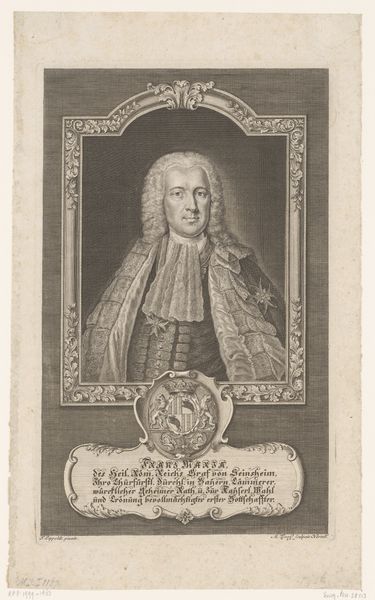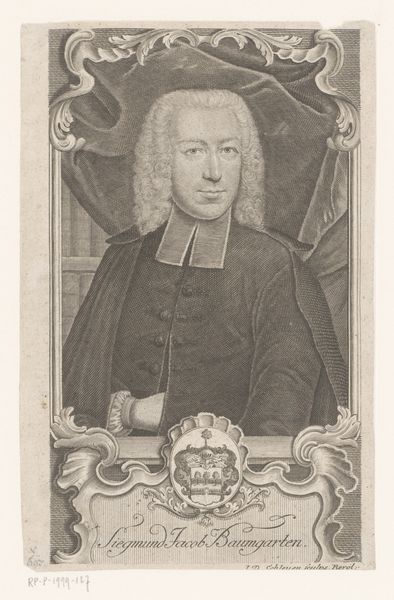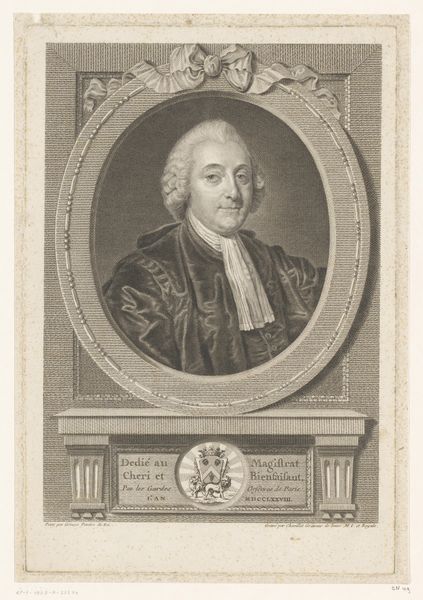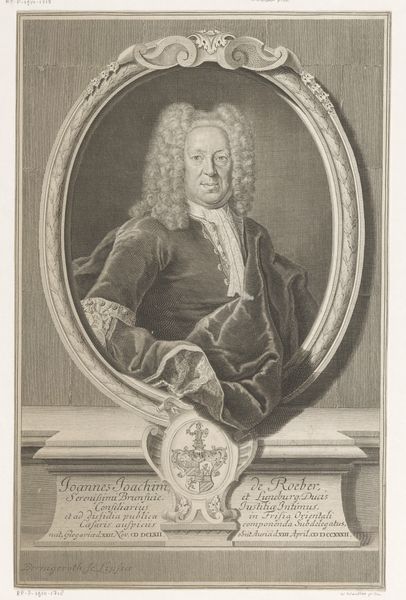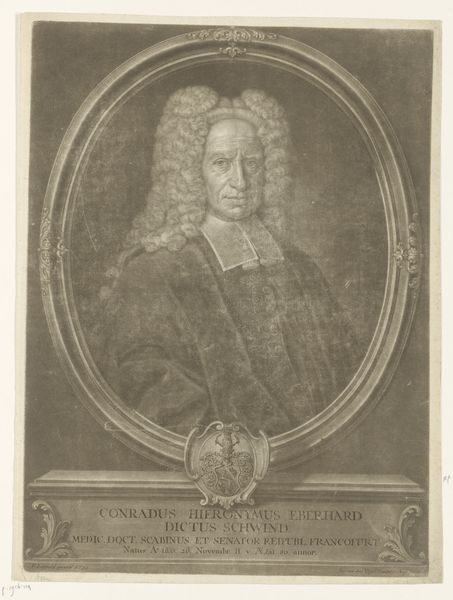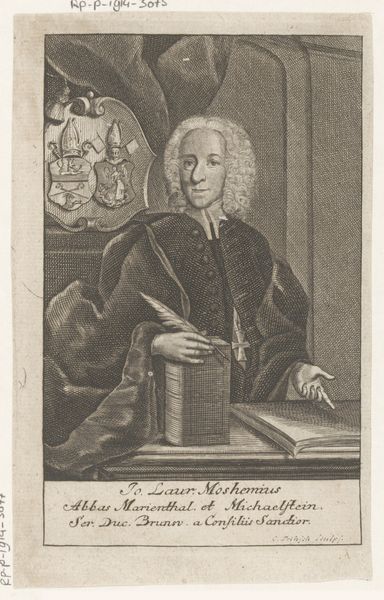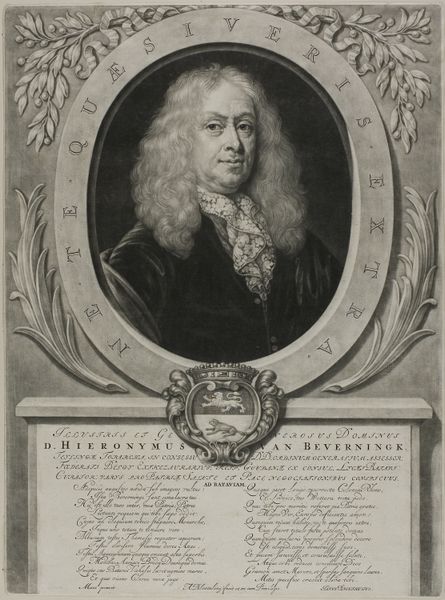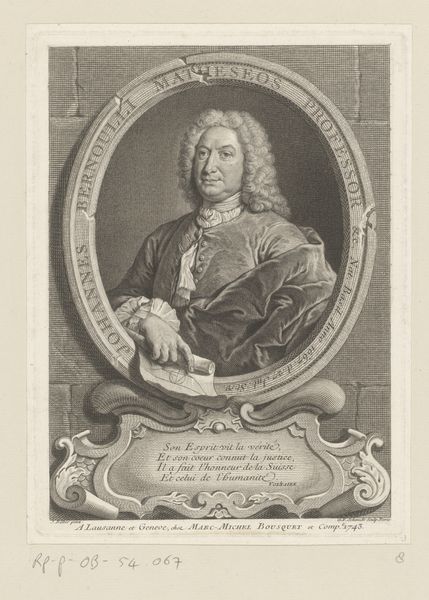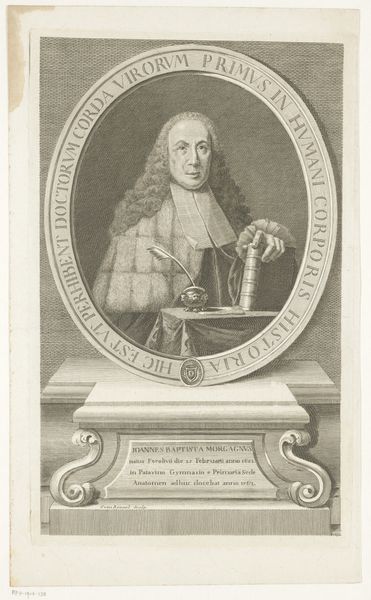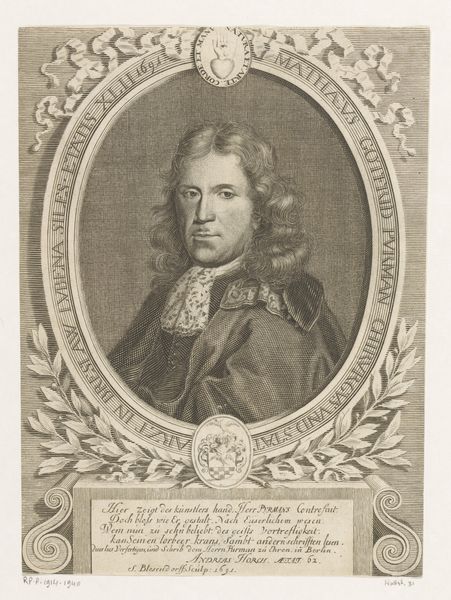
print, engraving
#
portrait
#
baroque
# print
#
old engraving style
#
traditional media
#
19th century
#
history-painting
#
engraving
Dimensions: height 188 mm, width 116 mm
Copyright: Rijks Museum: Open Domain
Editor: So, this is “Portret van Johan Adam Kulmus,” dating from 1720 to 1777. It's an engraving held at the Rijksmuseum, created by Hieronymus Sperling. There’s an undeniable formality to it, a stillness, almost as if trying to capture a fleeting moment of importance. What strikes you most about this piece? Curator: The formality is absolutely a key aspect, placing it within a complex framework of power, knowledge and representation. These kinds of portraits from this period aren't merely about depicting an individual. It's also a strategic visual claim. Johan Adam Kulmus held several important positions—physician, professor, member of academies. Consider how the symbols included here - the family crest, inscription indicating Kulmus' titles - actively contribute to shaping a specific narrative of the sitter's status and legacy. Who was included, and who was excluded? Editor: So, it’s less about capturing him accurately, and more about creating an image that promoted his accomplishments? The print, as a medium, also plays a part, making the portrait reproducible and accessible... almost as a means for greater distribution of his image and stature. Curator: Exactly. It functioned within a visual economy designed to reinforce social hierarchies. And by whom, and for whom? Notice, for instance, his elaborate lace, and the powdered wig. What do these markers of status communicate to us today, and who did they exclude at the time? Editor: I hadn't thought about it that way before. Seeing it as part of a visual strategy shifts my perspective quite a bit. Curator: It is a powerful thing to think about, and it allows us to begin dissecting these images, allowing us to read them with a new, more critical perspective. Editor: This has definitely made me think more deeply about the historical context surrounding this portrait and how that shapes its meaning.
Comments
No comments
Be the first to comment and join the conversation on the ultimate creative platform.
